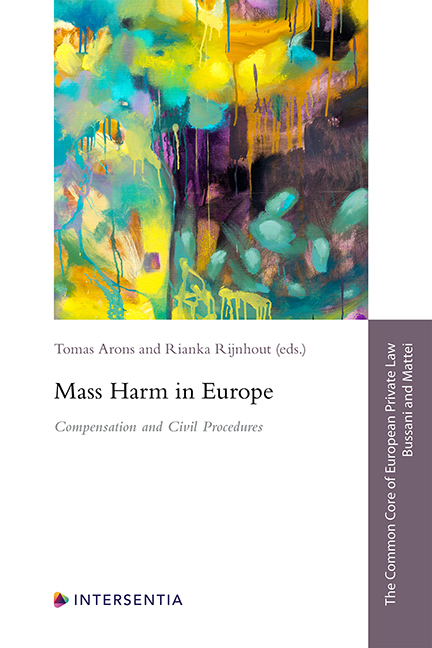Mass Harm And Procedural Options Per Jurisdiction: An Introduction
Published online by Cambridge University Press: 03 April 2024
Summary
INTRODUCTION
Mass harm solutions can be found in collective proceedings for reasons of effectiveness and efficiency. Collective actions can be instigated in a broad range of proceedings. For ease of functionality, we use a broad definition, including test and model cases, representative, declaratory and collective damage proceedings, and out-of-court (settlement) solutions. Multiple claims can be dealt with in a single procedure by the same court by joinder of claims. In this procedure, each individual (tort) claim is adjudicated by the court. In other models, courts deal with abstract questions of law and fact common to all claims in the mass harm situation that are brought before them by a representative organisation. Not all legal regimes allow for this type of collective action.
This chapter aims to provide insights into the litigation options for bringing mass harm claims in the 12 participating jurisdictions in this volume. The rapporteurs limit themselves to the main points. This description provides background information for the case studies, in which these litigation possibilities are discussed in more detail for each case. We dwell on this explicitly because we – as a group – noticed that it was not possible to properly understand the litigation aspects in each case without a description of the legal framework. The structure of this chapter is as follows. In the following, the different jurisdictions are discussed in alphabetical order (section 2). This is followed by a brief legal comparison in outline form (section 3).
PROCEDURAL RULES AND SOLUTIONS FOR MASS HARM
AUSTRIA
Matthias Dangl and Georg E Kodek
While the Austrian Code of Civil Procedure does not contain specific provisions on group actions, there are a number of procedural devices which, at least to a certain extent, can be utilised to handle mass litigation. Joinder allows several claimants to join their forces against one or more defendants (§ § 11 et seq of the Austrian Code of Civil Procedure). Also, the court has discretion to consolidate cases if this is in the interests of justice (§ 187 of the Austrian Code of Civil Procedure).
Sometimes potential litigants agree to file just one case which is designed to resolve a number of similar controversies between the parties or to await the outcome of an already pending case (a test case).
- Type
- Chapter
- Information
- Mass Harm in EuropeCompensation and Civil Procedures, pp. 69 - 106Publisher: IntersentiaPrint publication year: 2023



